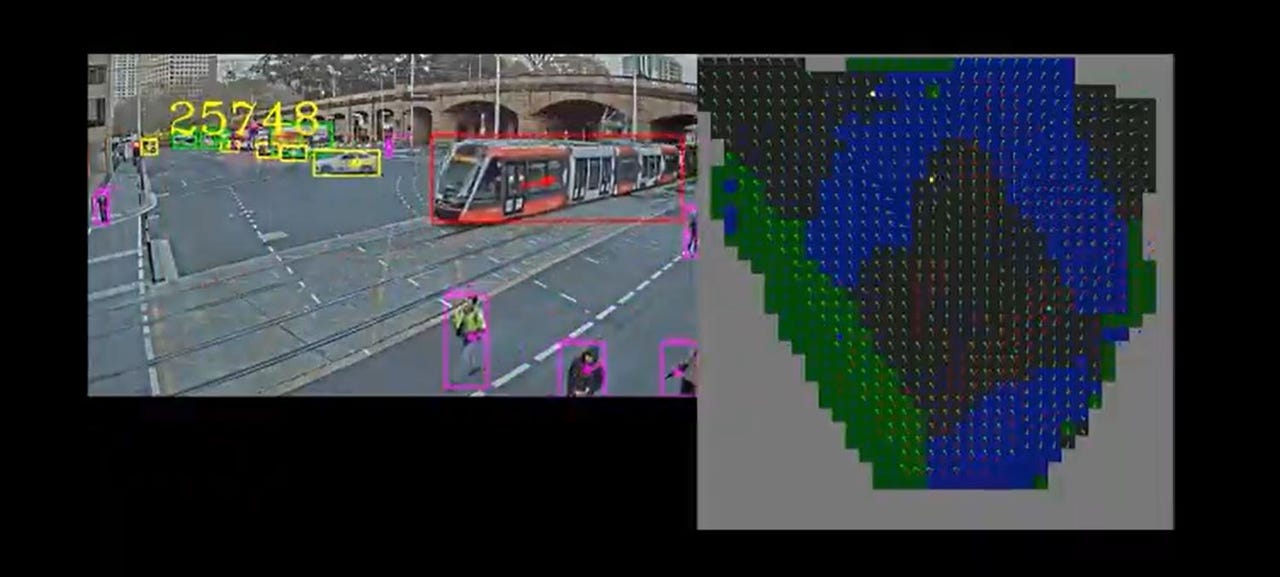NSW Transport and Cisco to run AI and IoT trials to ease congestion on public transport


The New South Wales government has teamed up with Cisco to trial the use of AI, IoT, and edge computing technology to improve the reliability of public transport in Sydney and Newcastle.
As part of the trial, Transport for NSW (TfNSW) is using IoT to enable physical objects to be "digitised" and connected to the transported network via sensors, while edge computing will be leveraged to take real-time data from connected objects to enable faster decision making. AI, meanwhile, will be used to assist with understanding data and automating the process.
The technologies will be connected to several buses, ferries, and light rail vehicles in both cities, the state government said.
"We've partnered with Cisco to investigate how a real-time view of vehicle supply and customer demand, and performance, can guide future network decisions, and monitor road conditions to identify where repair work is needed," Minister for Transport and Roads Rob Stokes said.
"We're using AI, Wi-Fi, and edge computing on Pitt St near Central Station to capture real-time data and identify high-risk events.
"We'll be able to keep a close eye on vehicle movements as more commuters and pedestrians head back to Sydney's busiest transport hubs as COVID-19 restrictions continue to ease."
The state government added the data captured will also be used to monitor assets and understand the comfort of customer journeys in real-time.
According to Cisco Australia and New Zealand transport and infrastructure general manager Simon Young, TfNSW is the only agency in the world to be trialling the company's AI system.
"These trials represent the strength of the partnership between Cisco and Transport for NSW to co-innovate and use technology to solve some of the most pressing and challenging problems facing transport agencies," he said.
These trials, however, will not be the first time TfNSW has tapped into AI and data analytics. In September, the agency said it was using AI to develop predictive algorithms to help national, state, local governments manage their road safety performance.
TfNSW teamed up with iMove Cooperative Research Centre (CRC), the University of Technology Sydney, the International Road Assessment Programme (iRAP), and geospatial data firm Anditi, to develop a faster and more automated method to extract raw road data.
As part of the initiative, dubbed the accelerated and intelligent road assessment program data collection (AiRAP) project, the group plans to deliver what it refers to as usable data for 20,000km of NSW roads using TomTom's MN-R next-generation map data, as well as extraction techniques and machine learning for Lidar data. Pilot assessments will also be conducted on a sample of local, state, and national highway roads to prove the methodologies.
At the end of last year, TfNSW partnered with Microsoft to develop a proof of concept that uses data and machine learning to flag potentially dangerous intersections and reduce road accidents.
As part of the proof of concept, Transport for NSW ran a trial in Wollongong to uncover five potentially risky intersections. It involved 50 vehicles generating more than a billion rows of data over a 10-month period, before Databricks and Azure were used to curate, ingest, and interpret the data.
The telematics data was used to identify speed, harsh braking, harsh acceleration, and lateral movement just before the intersection. It was then compared to patterns of existing crash investigation data.
Since the trial, two out of the five intersections have been scheduled for modification.
RELATED COVERAGE
- Food delivery rider injuries down by 70%, latest NSW government data shows
- Victorian trial reveals lidar sensors can alert road users of upcoming hazards
- Telstra and Arenberg develop 5G bike helmet prototype
- Victoria to trial 'smart' bike light tech to up road safety for cyclists
- University of Melbourne and Cubic test AI camera to improve road safety